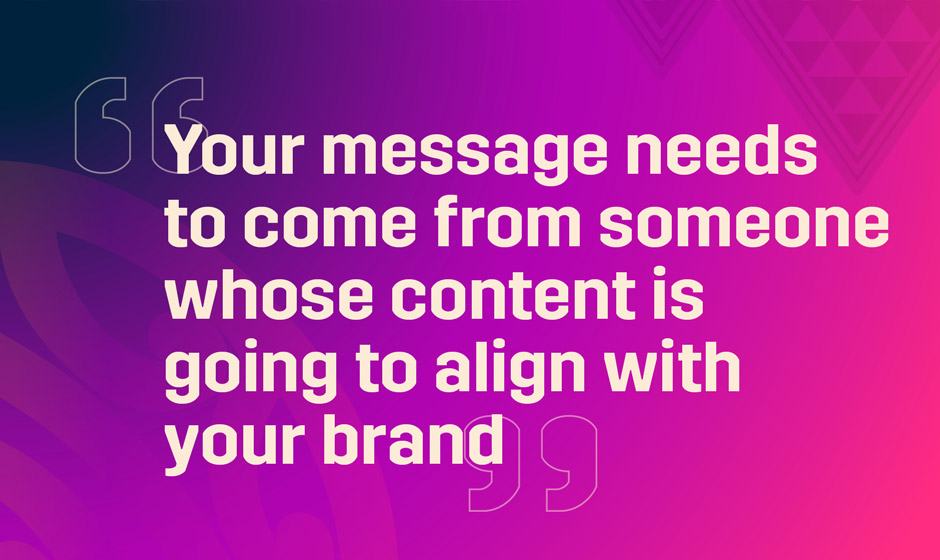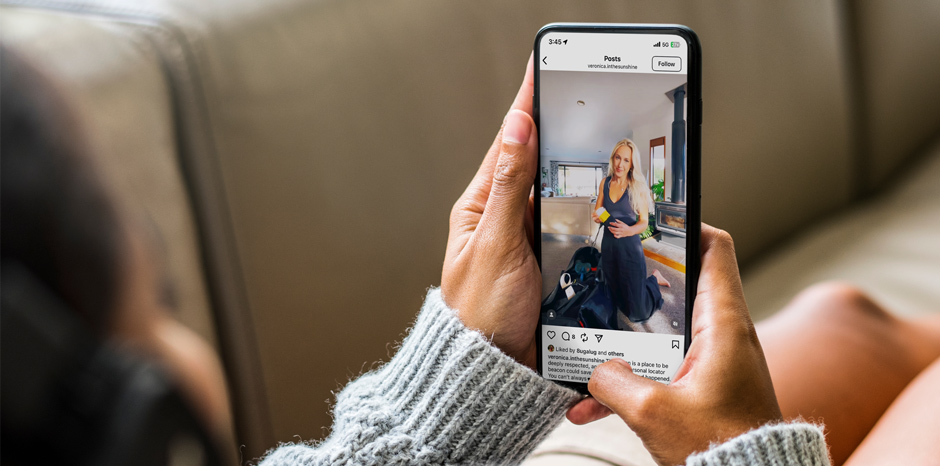
They’re not the new kids on the block anymore, but most marketers are still trying to figure out what makes Gen Z tick. Sit back while our Gen Z media specialist, Ella Johnston, puts things in perspective.
Ella is an expert at cutting through the scroll. Gen Zers spend three hours a day on social — cutting through matters.
Who is Gen Z?
If you’re Gen Z like me, you’ll be born between 1997 and 2012. We’re digital natives, the first to grow up with the internet, smartphones, and social media from the get-go. Many marketers focus all their budget on basic social and digital ads — in 2025 that won’t work.
The online space is getting more cluttered every day — AI, phishing, social media scams, they’re all destroying trust.
My generation looks to people we trust, whether that’s family and friends, or online influencers and celebrities. We’re increasingly turning to peer reviews and offline marketing to form opinions of and attitudes towards brands. So, how do you cut through the scroll and create real moments?
Simon says…
Gen Z is heavily influenced by peer reviews when we make purchase decisions. According to Nielsen CMI, Gen Z is 205% more likely than the average New Zealander to take notice of products endorsed by celebrities. And we’re 56% more likely to trust products and services promoted by our favourite celebrities or social influencers.
In comparison, 61% of Baby Boomers (born 1946 to 1964) strongly disagree that they take more notice of products endorsed by celebrities and they’re 66% less likely to trust products and services promoted by their favourite celebrity or social influencer.
You might be thinking “OK sweet! So, I can just message any influencer and Gen Z will buy my products and services?” The answer is no! Gen Z believe that realness and authenticity are the most important things in life (Live Nation, Love Song 2025).
Your message needs to come from someone whose content is going to align with your brand. You don't want to come across as “fake”. Would you get a DINK (double income no kids) influencer to promote baby products? Probably not — research which celebrities and influencers are going to connect with your brand and your audience.
When New Zealand Search and Rescue asked Hemisphere to increase the use of personal locator beacons for NZ Search and Rescue, we didn’t go to some random, ‘macro-influencer’ with hundreds of thousands of followers and no connection to the kaupapa. We trawled the tramping forums and social pages, eventually engaging with:
What made working with these influencers impactful wasn’t the size of their following. It was their authenticity and connection to the message. Working with authentic micro influencers contributed to a 57% increase in campaign engagement. And we saw a 20% increase in beacons hired and a 13% increase in beacons sold.

Influencing for social change
Our campaign with Te Puni Kōkiri for the Māori Electoral Option in 2018 demonstrates how we have historically worked with influencers authentically. Tasked with increasing Māori electoral participation among rangatahi, we discovered something powerful.
Stan Walker resonated authentically because, at that stage, he had never voted. Neither had his whānau.
Rather than hide this, we made it our strength. #FFS Choose (For Futures Sake Choose) followed Stan's genuine journey of discovery. "Stanimation" videos explained the history of the Māori electoral seats. Live Facebook feeds created real dialogue.
Our hero "Spoken Word" piece, co-authored with Sheldon Rua, went viral with 323,000+ views. We reached 58% of Māori aged 18-29, generated a 99.68% positive engagement rate from 22,189 social reactions and drove 33.31% growth in page engagement.
More recently, when tasked by Pacific Health Service to build a health awareness network for Pasifika men, we created Brothaz. A setting to accurately capture, reflect, and empower stories of the community.
We worked with the community to create a space on Instagram and Facebook for them to built on trust and shared identity. A community where our men felt heard and strengthened by others who knew what it was like to walk in their shoes. Using video, we struck a balance between social influencers like Creative Taro and TimProvise, and community champions.
By creating a safe environment for men to share, listen, and talk about their health journey, Brothaz has built a fast growing social media community of more than 200 people. Our goal is to actively change young Pasifika men’s attitude to their health. Making them more likely to reach out to their local health professionals when they do have concerns in the future.
Get real
Sometimes cutting through the scroll means taking things offline. In 2024, more than $2 billion was spent on digital only advertising in New Zealand (Advertising Standards Authority, Revenue Report 2024). Yet, what Gen Z crave is real-world experience over online engagement (Live Nation, Love Song 2025). We’re beginning to reject the always-on culture that we’ve been brought up in. Gen Z favour Out of Home (OOH) because it feels relaxing and feels unique to our lived experience. 33 percent of OOH viewers search advertised brands online. Nearly a quarter visited an advertised website in the past year and 15% visited an advertiser’s social media page.
While OOH takes things offline, it can also create online moments. When an awesome piece of OOH catches our eye – we’re more likely to share it on social media. This user-generated content (UGC) can spread your brand message beyond the physical billboard. Extending campaign activity from paid media to earned media. Earned media that builds trust and can generate lasting influence.
Mitsubishi Electric weren’t afraid to explore how dynamic OOH could increase salience among Gen Z. They know that most people will only become a customer once they own a property. But they also understand the value of driving future demand, ensuring they’re the preferred brand (or at least in the consideration set) when the time is right. In 2025, the oldest members of Gen Z are 28 years old. We’re ready to begin planning…
It’s not just about getting their brand name recognised, however. It’s about making sure that value is communicated with every future customer interaction. Mitsubishi Electric delivers their future audience value through their digital billboard creative. They give the audience weather information, making ads feel personalised to each viewers unique environment. Let’s be real, it makes us feel pretty special when we’re being spoken directly to!
Challenges or opportunities?
For any audience, we need to reach them where they are. But don’t forget about the current challenges they’re facing. So even though we’re the generation with the highest use of social media, maybe it’s time to think twice about how you reach Gen Z. Recognising where we’re at will help you to improve your strategy and community building. In turn, strengthening your brand's identity.
If you don’t know the challenges your audience are facing or you’re not sure how to reach your market, it’s totally fine! Hemisphere has some media icons whose job it is to get to know your audience, so you can start saying “slay” more and “nay” less.